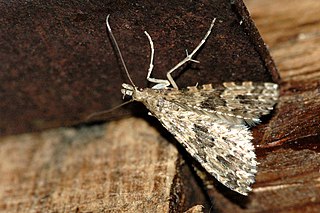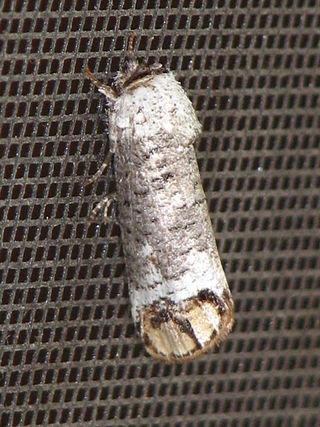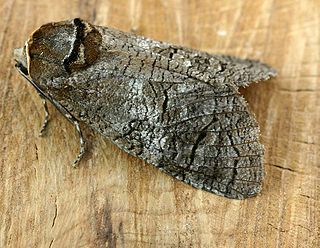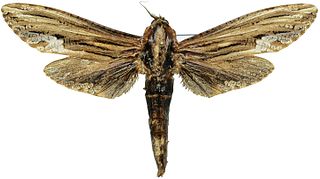
Aluctoidea is the superfamily of many-plumed and false plume moths. These small moths are most easily recognized by their wings. These each consist of many narrow strips of membrane around the major veins, instead of a continuous sheet of membrane between the veins. In living moths in the wild, this is often hard to see however. When they are at rest, the "plumes" partly overlap, appearing as solid wings. But even then, they can be recognized by the wings having a marked lengthwise pattern and uneven edge.

The Cossidae, the cossid millers or carpenter millers, make up a family of mostly large miller moths. This family contains over 110 genera with almost 700 known species, and many more species await description. Carpenter millers are nocturnal Lepidoptera found worldwide, except the Southeast Asian subfamily Ratardinae, which is mostly active during the day.
Andesiana is a genus representing its own family Andesianidae and superfamily Andesianoidea, the "Andean endemic moths". It contains three species with a wingspan up to 5.4 cm. in female A. similis and 3.5 cm. in males. This far surpasses in size any previously known monotrysian moth. These large Microlepidoptera are restricted to Andean South America, from where they were described originally in 1989 in the family Cossidae by their discoverer Patricia Gentili.

Zeuzera is an Old World genus of moths belonging to the family Cossidae.

Polyphagozerra coffeae, the red coffee borer or coffee carpenter, is a moth of the family Cossidae. It was described by John Nietner in 1861 and is found in Asia. Records from the Moluccas and New Guinea refer to Polyphagozerra reticulata, which was previously considered to be a synonym of P. coffeae. It is a widespread pest that attacks many plants.

Dyspessa is a genus of moths belonging to the family Cossidae. It was described by Jacob Hübner in 1820.
Catopta is a genus of moths in the family Cossidae.

Cossus is a genus of moths in the family Cossidae described by Johan Christian Fabricius in 1793.

The Zeuzerinae are a subfamily of the family Cossidae.
Mirocossus is a genus of moths in the family Cossidae, described by J.W. Schoorl in 1990.

Chalcidica minea is a moth in the family Cossidae. It is found in India, Vietnam, Myanmar, Thailand, the Moluccas, Papua New Guinea, Queensland and on the Solomon Islands. The habitat consists of lowland rainforests.

Duomitus is a monotypic moth genus in the family Cossidae described by Arthur Gardiner Butler in 1880. Its only species, Duomitus ceramicus, described by Francis Walker in 1865, is found in Yunnan in China and from southern India and Malaysia to Sumatra, Ceram and New Guinea.
Skeletophyllon is a genus of moths in the family Cossidae.
Trismelasmos is a genus of moths in the family Cossidae.
Panau is a genus of moths in the family Cossidae.

Indarbela quadrinotata, the bark-eating caterpillar, is a moth in the family Cossidae. It is found in India and Sri Lanka. It was described by Francis Walker in 1856.
Strigocossus moderata is a moth in the family Cossidae. It is found in Cameroon, Gabon, Kenya, Malawi, Mozambique, Sierra Leone, South Africa, Tanzania and Zambia.









